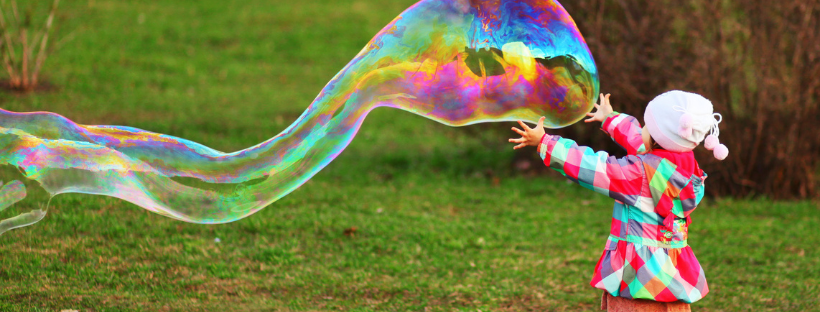According to PLAN Investing in girls' education is the best investment in the world! Investing in girls' education is an investment in a better future. When also girls get to go to school, economical equality increases.
Around the world, girls are unfortunately still discriminated against every day for just being girls – and PLAN is working hard for achieving gender equality. On October 11th it is the 10th anniversary of the Day of the girl, so let's focus on the education of girls for a moment and celebrate girls!

Girls have the right to a safe, educated and healthy life, not only during these critical formative years, but also as they mature into women.
- PLAN International
How many children accessed early education in 2020?
Overall, the general participation in preschool programs increased from 65% in 2010 to 73% in 2019.
Participation in organized pre-primary learning varies around the world. In 2019, the participation rate was 43% in sub-Saharan Africa, while in Latin America and the Caribbean it was 93%.
Participation in pre-primary learning dropped in 2020 globally during the COVID-19 pandemic because early education closed in most countries. This left many children reliant on parents or other caregivers at home, where increased poverty, unsafe conditions, and lack of stimulation impacted negatively on their development.
In 2020, around 40% of children below primary-school age needed child care but they were unable to access child care. As gendered social norms expect, girls and young women took care of small children instead of educated early childhood educators. COVID-19 worsened the burden of childcare on women and girls.
What is early childhood education and care?
How can girls reach their full potential in learning?
Everything starts from early on. In order to develop well and succeed in life, all children need balanced cognitive, social, and emotional development in addition to good care, food, nutrition, and protection.
For balanced cognitive development, children need a safe and interesting environment to explore with their primary caregiver. For example reading books, naming objects, rhyming, singing, playing memory games and puzzles, and trying to solve little problems supports cognitive development. In short: giving the child's brain some tasks in a safe and inspiring environment with an adult.
For balanced social development, children need a primary caregiver who is supportive, loving, trustworthy, and interested in what is best for the child. Talking to the child, responding to her initiatives, discussing, asking questions, and questioning actions support the child's social development. Also, ethics of right and wrong and friendship skills are part of social development. Children should be exposed to live social contacts, the company of other children, and respectful communication.
For balanced emotional development, children need a lot of practice in a safe and supportive environment. Emotional development includes noticing emotions, expressing emotions, and managing emotions. Emotional skills play an important role when forming relationships and friendships with other people. It is important to learn to recognize and name others' emotions and some ways to respond to them. Also, it is important that children are allowed to show their emotions and not to hide everything inside.
In order to let girls develop into their full and greatest potential, in addition to balanced emotional, social and cognitive development, girls need to have good support, opportunities, and practice as well as achievable successful moments in education.
How to improve children's learning environment?
How educators can support girls in education?
All educators should make sure they support, treat, talk and see all children equally in front of them. All children should have the same opportunities, same support systems, and same possibilities despite their gender (or any other matter).
Educational institutes should offer inclusive, quality education that develops girls' personal skills, promotes gender equality through various educational materials, and also offers educational support to primary caregivers to value girls’ rights.
Even in 2020 if girls get to have an education, all education is not yet equal, so we as educators have some work to do. According to PLAN, girls do not participate equally in all subjects, such as maths. Girls are also not acquiring the present day's important ICT skills due to lower access to technology.
As a result of this, girls do not receive the education needed for becoming leaders in the economic field. According to PLAN the percentage of females studying engineering, manufacturing, construction or ICT is below 25% in more than two-thirds of countries globally.
Concrete tips on how to support equality in education:
Give some more freedom to girls. It might help them find new capabilities and interests and try something new!
- Give children the freedom to choose (what toys to play with)
- Give all children the possibility to free play (with whoever they want to)
- Do not suggest or hint (what is a good color to paint with)
- Do ask (what is your dream, what do you want to learn about?)
- Do not push for certain roles (when practicing a theatre play)
Give examples of great, successful girls and women around the world. They might inspire her too!
- Read books that have girl heroes
- Watch a movie or cartoon with a female main character
- Introduce famous women that have succeeded in life (presidents, scientists, novelists, actors, managers, poets, doctors, and athletes...)

.png)


